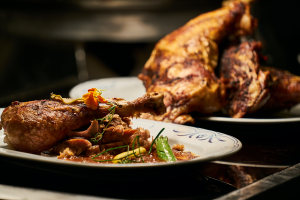 Holiday meat safety is crucial to ensuring that everyone enjoys their meal without any health risks. Whether you are a seasoned cook, or a new cook, here are 6 important tips.
Holiday meat safety is crucial to ensuring that everyone enjoys their meal without any health risks. Whether you are a seasoned cook, or a new cook, here are 6 important tips.
1. Buying Meat Safely
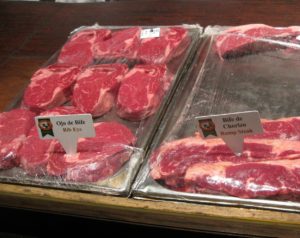 You can purchase fresh, frozen or sometimes precooked meat. It is important to know how many adults, teenagers and younger children you will be serving. A good rule of thumb is to calculate 1 to 1 ½ pounds per person if cooking a whole bird or a bone in roast or ham. If you are cooking a turkey breast or a boneless roast, you will want to calculate ¾ pound per person. Check expiration dates and avoid any packaging that looks damaged or has an odd smell. If you are traveling far, bring a cooler to keep it at a safe temperature. Keep raw meat separate from other foods in your grocery cart or refrigerator to avoid cross contamination.
You can purchase fresh, frozen or sometimes precooked meat. It is important to know how many adults, teenagers and younger children you will be serving. A good rule of thumb is to calculate 1 to 1 ½ pounds per person if cooking a whole bird or a bone in roast or ham. If you are cooking a turkey breast or a boneless roast, you will want to calculate ¾ pound per person. Check expiration dates and avoid any packaging that looks damaged or has an odd smell. If you are traveling far, bring a cooler to keep it at a safe temperature. Keep raw meat separate from other foods in your grocery cart or refrigerator to avoid cross contamination.
2. Proper Storage before Cooking
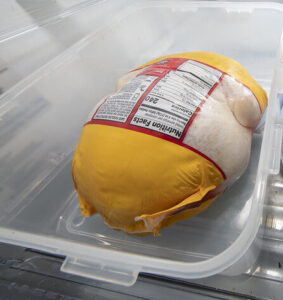 Refrigerate or freeze it immediately when you get home. Raw meat can be stored in the fridge if cooking within 1 to 2 days. To avoid cross contamination from dripping meat juices, be sure to store below or at the bottom of the fridge. Otherwise, freeze it for longer storage. Store meat at 40°F or below in the fridge and 0°F in the freezer.
Refrigerate or freeze it immediately when you get home. Raw meat can be stored in the fridge if cooking within 1 to 2 days. To avoid cross contamination from dripping meat juices, be sure to store below or at the bottom of the fridge. Otherwise, freeze it for longer storage. Store meat at 40°F or below in the fridge and 0°F in the freezer.
3. Thawing Correctly
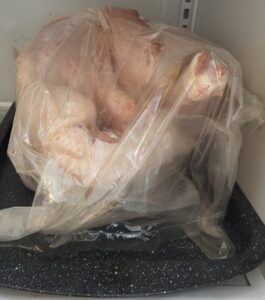
Safely thaw meat in the refrigerator that you have selected to prepare for the meal. The size of a turkey or roast will determine how many days it will take to thaw. It typically takes 1 day for every 4 pounds. For example, a 24-pound turkey will take approximately 6 days to thaw in the fridge.
4. Cooking Temperatures
Use a meat thermometer to ensure it is cooked to a safe internal temperature. Avoid partially cooking and finishing later, this can allow bacteria to grow.
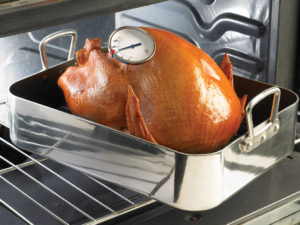 Poultry (chicken, turkey, duck): 165°F
Poultry (chicken, turkey, duck): 165°F- Beef, Pork, Ham, Lamb (steaks, chops and roasts): 145°F (with a 3-minute rest time)
- Fish and Seafood: 145°F
- Ground meat: 160°F
- Egg dishes: 160°F
- Cooking or reheating dishes (green bean casserole, stuffing, yams): 165°F
- Reheating precooked meats: 165°F
5. Serving
Serve meat at 140°F or higher. Warming trays, roasters, or slow-cookers are an option to keep food at safe temperatures.
6. Leftovers
Place leftovers in shallow containers for quick cooling. Refrigerate them within 2 hours. Eat or freeze leftovers within 3 to 4 days. Reheat leftovers to at least 165°F before serving.
As always, remember to wash your hands with soap and water for at least 20 seconds before food preparation. By following these simple guidelines, you can help ensure a safe and enjoyable holiday feast!


Great reminders!